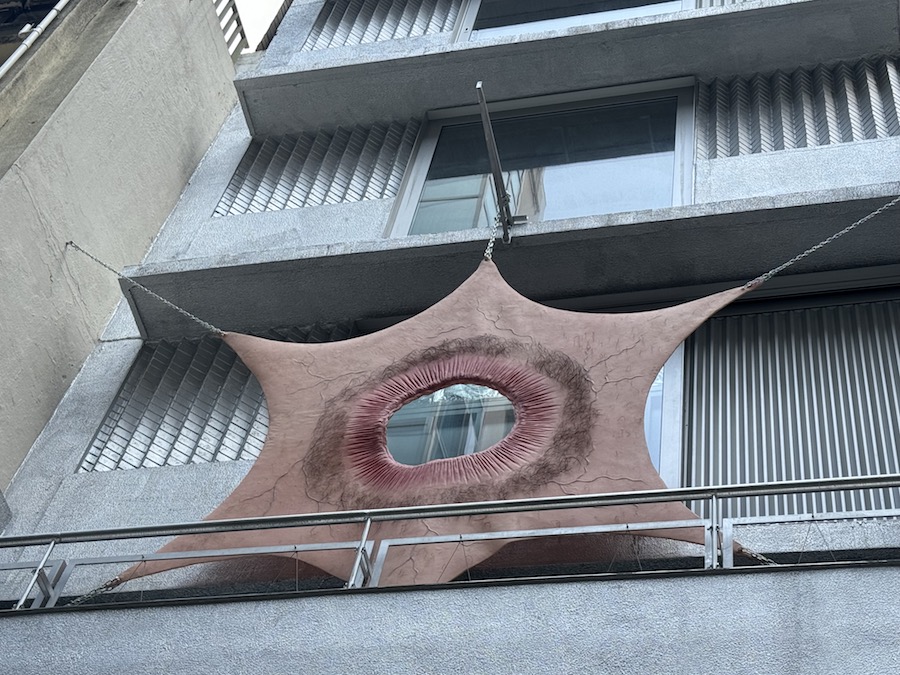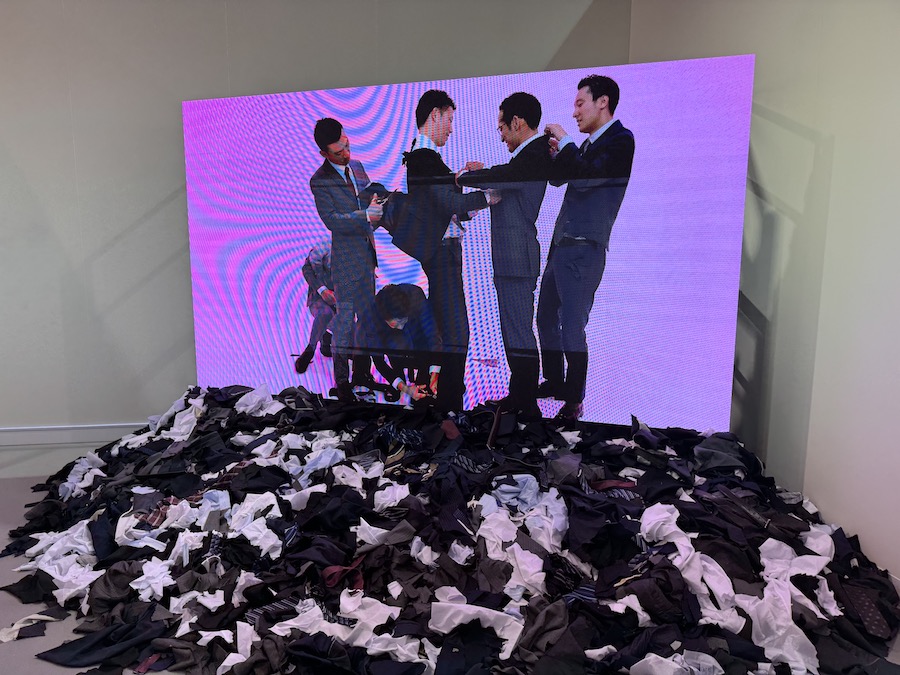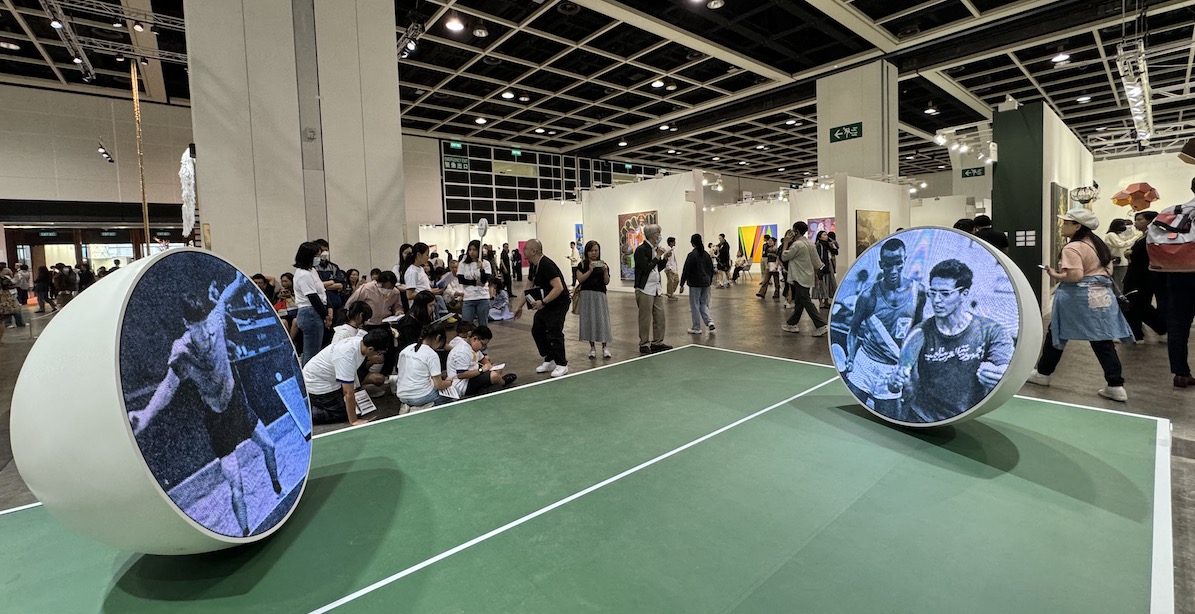Hong Kong never fails to impress. For the past 15 years, I have visited and worked at Art Basel Hong Kong, and this year’s experience was exceptionally enjoyable.
The fair has resumed its pre-pandemic size, cementing Hong Kong’s status as the leading art centre in Asia. Despite the growth in other markets such as Seoul, Taiwan, Tokyo, and Singapore—which also acts as a secondary hub for Southeast Asia—none can compete with Hong Kong’s sustained, advantageous tax and regulatory environment that includes duty-free art imports. This setting continues to attract premier international art galleries and auction houses. Both Sotheby’s and Christie’s are expanding, with plans to inaugurate larger headquarters in Hong Kong later this year: Christie’s at The Henderson in September with a 50,000-square-foot Asia Pacific headquarters, and Sotheby’s at Landmark Chater in July with a 24,000-square-foot maison. M+, which opened in 2021, has swiftly established a new benchmark for museums in the region, securing its distinction as a genuinely international museum. Coinciding with Art Basel Hong Kong, its façade features Yang Fudong’s new film “Sparrow on the Sea”.

Before the fair started, I visited the galleries. At Kiang Malingue, Wong Ping’s “anus whisper” installation, inspired by Georges Bataille’s “The Solar Anus” (1931), humorously questioned the aesthetic significance of nonsense through a playful, somehow Dadaist series of works. Hauser & Wirth’s new space in Central launched with a compelling presentation of Glenn Ligon’s latest works. At Pearl Lam Gallery, Maggi Hambling’s exhibition “The Night” offered a sensuous journey through the allure and tension of the night, her paintings resonating with Asian calligraphy and traditional Japanese landscape art. David Zwirner showcased Wolfgang Tillmans’s “The Point Is Matter,” an intimate collection of his new and recent works.
On the other side of the island, where many galleries have relocated, I was fortunate to encounter British-Pakistani artist Naiza Khan at Rossi and Rossi. Her current exhibition, a thoughtful arrangement of drawings, oil paintings, and brass sculptures, critically examines landscapes and infrastructures, their evolution, and the entrenched colonial issues related to borders, natural resources, and the geometric patterns of empires.
A visit to the Catalyst in Sheung Wan for the “Under One Moon” exhibition was a highlight. Inspired by Sissi Kaplan’s “77 Days” and curated by Sam-I-shan, this site-specific exhibition merged moving images, sound, light, photographs, and text in a meditation on isolation and grief during the pandemic, resonating as a powerful reflection on resilience.
Art fairs offer a whirlwind of discovery, full of challenges and opportunities to encounter new artists and galleries, though the sheer volume can be overwhelming. Out of the 242 galleries present, I sought out novel and compelling works.

One piece that stood out was Fuyuhiko Takata’s video installation at Tokyo’s Waitingroom, which was a playful and homoerotically charged commentary on male masculinity, directly referencing Yoko Ono’s 1965 performance “Cut Piece.”
At Sabrina Amrani Gallery, I was captivated by the intricate miniature paintings of Wardha Shabbir. This young Pakistani artist, born in Lahore in 1987, creates works that initially appear to be tangled jungles but, upon closer examination, reveal profound, allegorical motifs.
The “Discoveries” section featured BangkokCityCity Gallery’s bold and playful installation by Nawin Nuthong, incorporating video game aesthetics to reinterpret historical narratives.
I was also impressed by the Station Gallery from Australia, which presented a synergistic blend of works by Australian artist Daniel Boyd and Lebanese sculptor Shireen Taweel. Boyd’s art, drawing on his Kudjla/Gangalu heritage, confronts Eurocentric accounts of Australia’s colonial past in a contemporary context, highlighted by an off-site installation that masterfully interacted with the natural light at Pacific Place.
Albano Hernandez’s installation at Pi Artworks was another highlight. The Spanish artist invites us to reconsider our views on painting while addressing sustainability and environmentally conscious practices. His work creates a thought-provoking contrast between ‘waste’ and ‘fine art.’
The “Encounters” section at Art Basel, curated by Alexis Glass-Kantor, featured 16 ambitious works and installations, 11 conceived exclusively for the fair. A notable piece was Li Wei’s satirical “Once Upon a Time,” which used lifelike child mannequins of world leaders to offer a critical view of global politics through the lens of childhood play.
Yoan Capote’s two-part installation examined the treacherous search for a better life; a grand wall piece crafted within his studio alongside community members featured numerous fishhooks on a richly textured surface to evoke a dark and stormy sea. Opposite it stood the elegant granite sculpture “Endless Sea (Requiem), 2021.”
Ming Wong’s “Friendship First, Competition Second (2024)” is a fresh installation from the Berlin-based Singaporean artist. It playfully pays homage to the subtle power of Sino-American “ping-pong” diplomacy that preceded the landmark 1972 meeting between US President Richard Nixon and Chairman Mao Zedong.
As the fair concluded, most galleries were pleased with their sales and connections made. Although the vibe didn’t quite match the electrifying return of the first post-pandemic fair in 2023, the prevailing economic downturn in China has undeniably dampened the enthusiasm of Chinese collectors. Nonetheless, the aisles bustled with visitors from across Asia, prominently featuring Taiwanese, Koreans, and Singaporeans, while fewer Europeans, Americans, and Middle Easterners were seen.
Leaving Hong Kong, I pondered whether, despite being the undisputed centre of Art in Asia, the fair has shifted from an international to a more regional event.
Words and Photos Virginie Puertolas-Syn ©Artlyst 2024
What the Dealers Had to Say – Click Here
Visit Here

